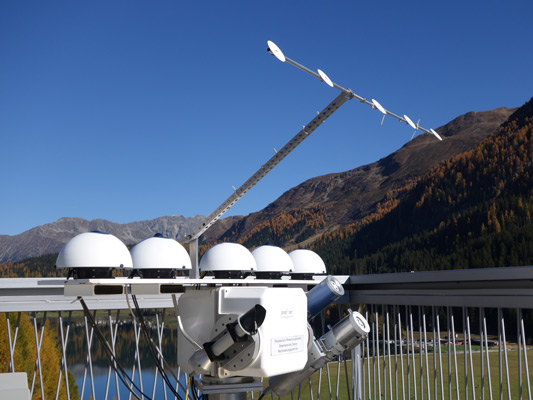Überblick
Die World Infrared Standard Gruppe von Pyrgeometern wurde 2004 als Interims-referenz für atmosphärische langwellige Einstrahlung entwickelt. Zusammen mit dem PMOD/WRC-Hohlraumkörper werden Kalibrierungen von Forschungs- und kommerziellen Langwellenradiometern durchgeführt, um kohärente Messungen von langwelliger Strahlung bereitzustellen. Die Prozederen für die Kalibrierung von Pyrgeometern wird in einem WMO-Dokument beschrieben (WMO, 2015).
Overview
The World Infrared Standard Group (WISG) of pyrgeometers was established in 2004 as an interim reference for atmospheric downwelling longwave radiation. Along with the PMOD/WRC blackbody cavity, calibrations of research and commerical longwave radiometers are conducted in order to provide coherent measurements of longwave radiation. Calibration procedures for pyrgeometers at PMOD/WRC are described in a WMO document (WMO, 2015).

